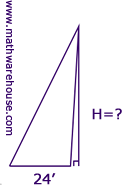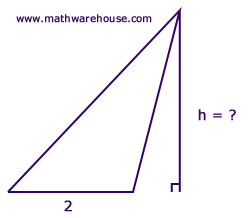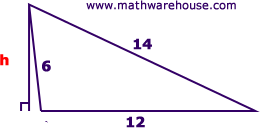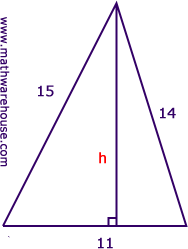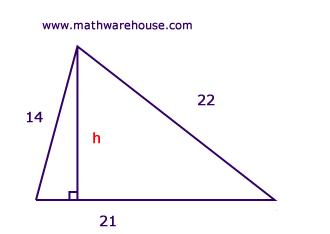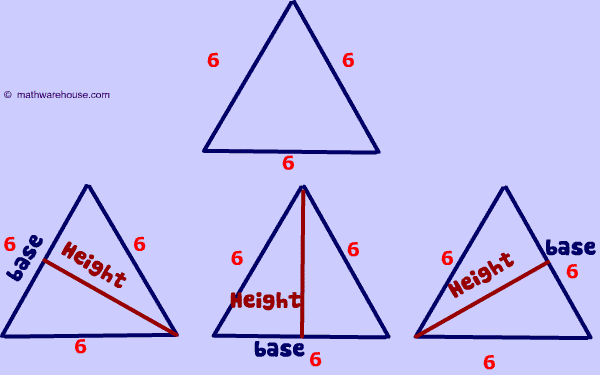Example
Example 1
In diagram 1 , the area of the triangle is 17.7 square units, and its base is 4.
Directions: Calculate its height
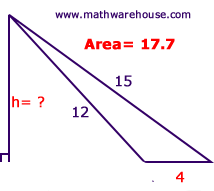
The red measurements are the ones that are relevant to this problem.
Remember that every triangle can have 3 base/height pairs. So, to solve this type of question, you must first identify the base..
 So whenever you are talking about the height, we have to make sure we know which of the 3 'bases' (or sides) of the the triangle we are talking about.
So whenever you are talking about the height, we have to make sure we know which of the 3 'bases' (or sides) of the the triangle we are talking about.
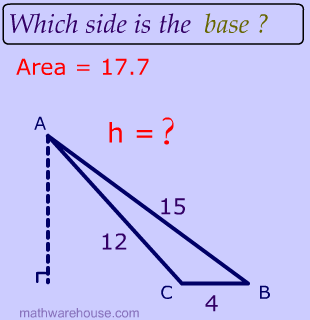
Remember: the height is perpendicular to the base , which is $$ \overline{CB}$$. And $$ \overline{CB} $$ has a measure of 4. We cannot use the other sides to help us solve this problem. So, for the rest of this lesson, your first task is to identify the which side is the base, especially when you get to the more challenging ones.
Substitute known values into the area formula.
$ A = \frac 1 2 \cdot \text { base } \cdot \red {\text { height } } \\ 17.7 = \frac 1 2 \cdot 4 \cdot \red h $
Find the height by solving for $$\red h $$.
$ 17.7 = \frac 4 2 \cdot \red h \\ 17.7 = 2 \cdot \red h \\ \frac{17.7}{2} = \red h \\ \red h = 8.85 $

